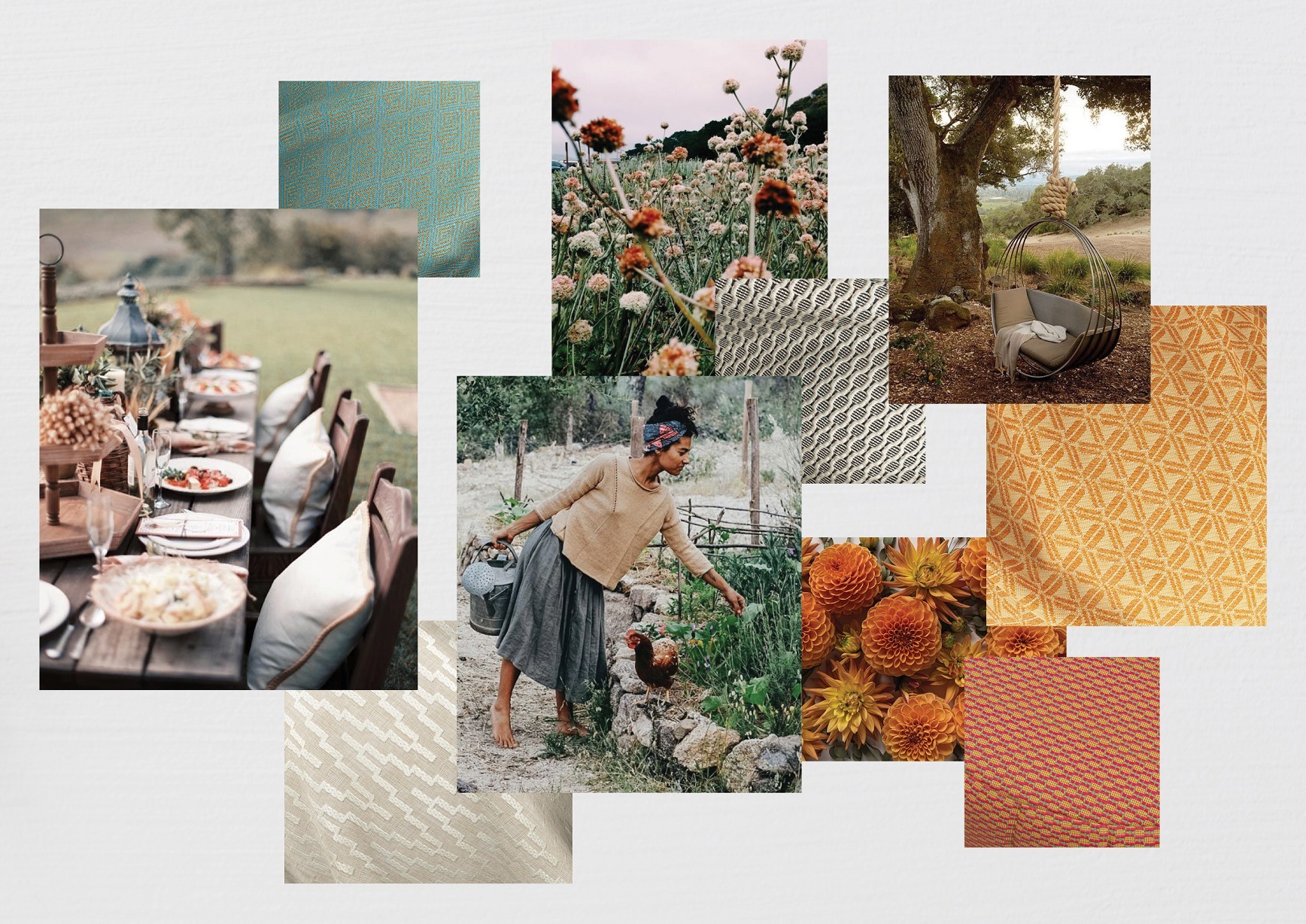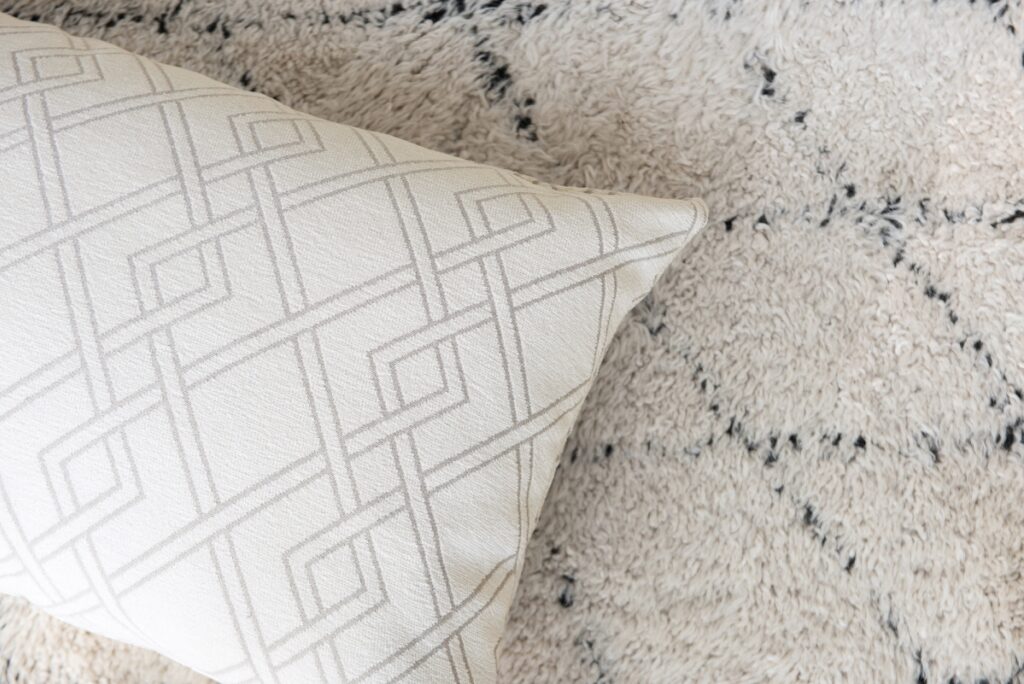Eco-friendly upholstery choices for cottagecore homes
Remember our post about creating a dreamy cottagecore home with our performance fabrics? Well, in this blog post, we’re looking at the natural affinity between cottagecore and sustainability, and how FibreGuard’s eco-friendly furniture fabrics can play a part in creating cosy spaces inspired by nature.
Breathing new life into pre-loved furniture finds
With its focus on a simpler, slower pace of life, the rustic cottagecore trend lends itself perfectly to thrift shop finds and upcycling. There’s something incredibly satisfying about bringing an old piece of furniture back to life, and you’ll be safe in the knowledge that you’re doing your bit for the planet, too.
We love this hack from My Uncommon Slice of Suburbia for transforming wicker furniture. Simply sand it down and spray paint it to create a whole new look. Intense colours such as charcoal or dark blue work particularly well for a contemporary vibe.
Gail from My Repurposed Life has a great tutorial on how to turn an old coffee table into an upholstered beach, and Christy Little from Our Southern Home has some handy tips on using recycled wooden windows to create an interesting, layered look.

Re-using furniture and decorative pieces
Simplicity and sustainability are at the heart of the cottagecore aesthetic. By re-purposing existing furniture and seeking out second-hand pieces, you’re doing your bit for the planet and saving money at the same time.
Vintage and antique pieces also tie in well with the muted colours of the cottagecore palette. Shades reflecting nature are the way to go here such as sage green, dusty pink, beige and brown.
“Living simply, with only the things that are essential to your needs and comfort, allows you to create a home and life that's calm, peaceful, and more meaningful. Instead of buying new things for your home, you make a conscious effort to reduce spending by mending and making do with what you already own, or by trading with friends or finding used items that’ll work.” Kelly Anderson from the Simple Home Simple Life blog
3 ways to bring pre-loved furniture into your home
- Seek out vintage solid wood furniture: Good quality, solid wood pieces are built to last which is why they’re such a great option for a second-hand purchase. Look out for wooden tables, chairs, bed frames and wardrobes at antique sales, eBay, and other online vintage sites.
- Choose double duty pieces: Buy fewer items for your home by ensuring the ones you do select work extra hard. A small chest of drawers can double up as a bedside table, for example, or an old trunk can be used as a characterful coffee table.
- Repair broken or torn items: Instead of chucking out pieces of furniture that are tired or broken, learn how to mend them. Wooden items can usually be fixed with nails or wood glue, and curtains or cushions can be mended or adapted with fairly basic sewing skills.
Related Read: Expanding Sustainability: The Power of Diverse Eco-Label Certifications

Related read: Colour inspiration: an autumn of zen colours

Sustainability from a consumer perspective: ‘buy once, buy better’
Have you heard of 'conscious consumption'? It’s the growing awareness of the environmental impact of what we buy. This can refer to the volume of things consumed – because the more we buy the more ends up in landfill – or the sustainability credentials of the items we select.
Quality over quantity is the way to go here, and many people are choosing to ‘buy once, buy better’ as they opt for well-made, durable items made by companies with strong ethical and environmental values.
A more mindful approach to consumption aligns well with the cottagecore aestheticbecause both concepts are fundamentally about respecting the planet and drawing inspiration from nature.
“Buying well means choosing long-lasting products that will stand the test of time and use less energy to produce and transport than their cheaper counterparts. Buying well also means finding a way to reuse things rather than throwing them away after one season - whether that means reusing old pallets as planters or re-purposing an old dresser into a kitchen island.” - The FibreGuard team
Environmentally friendly design from an upholstery manufacturer’s perspective
At FibreGuard, we’re committed to adopting a sustainable approach wherever possible. So much so that we’ve aligned our entire business with the UN’s Sustainable Development Goals.
Read our updated 2024 Sustainability Statement here.
So how does this translate into real life? In three ways:
- During the manufacturing process of our eco-friendly upholstery fabrics, we limit the use of chemicals, energy and water, and our packaging is designed to reduce environmental impact.
- Our fabrics are also certified under the STANDARD 100 by OEKO-TEX® which means they meet strict environmental standards relating to production, sustainability and ecology.
- We also use digital fabric sampling to help reduce textile waste. Our Twinbru system allows customer to view our products via an extensive library of 3D ‘digital twins’. This innovative service helps reduce waste in the textile industry as well as limiting the number of journeys required to visit showrooms to view physical samples.
To sum up, environmentally friendly products and cottagecore style are closely aligned because of their mutual respect for the planet. When looking for eco-friendly fabrics for cottagecore style, you have a vital part to play in making sustainable choices that will limit damage to the environment.
Where to find FibreGuard fabrics
FibreGuard has a global presence, everywhere from the USA to Europe to Australia, the Middle East and South East Asia.
Looking to purchase FibreGuard fabrics for your furniture? Browse our digital fabric textures for free on the TwinBru platform! You can find the FibreGuard digital twin collection here. Find a design you like? You can order free fabric samples from TwinBru as well.